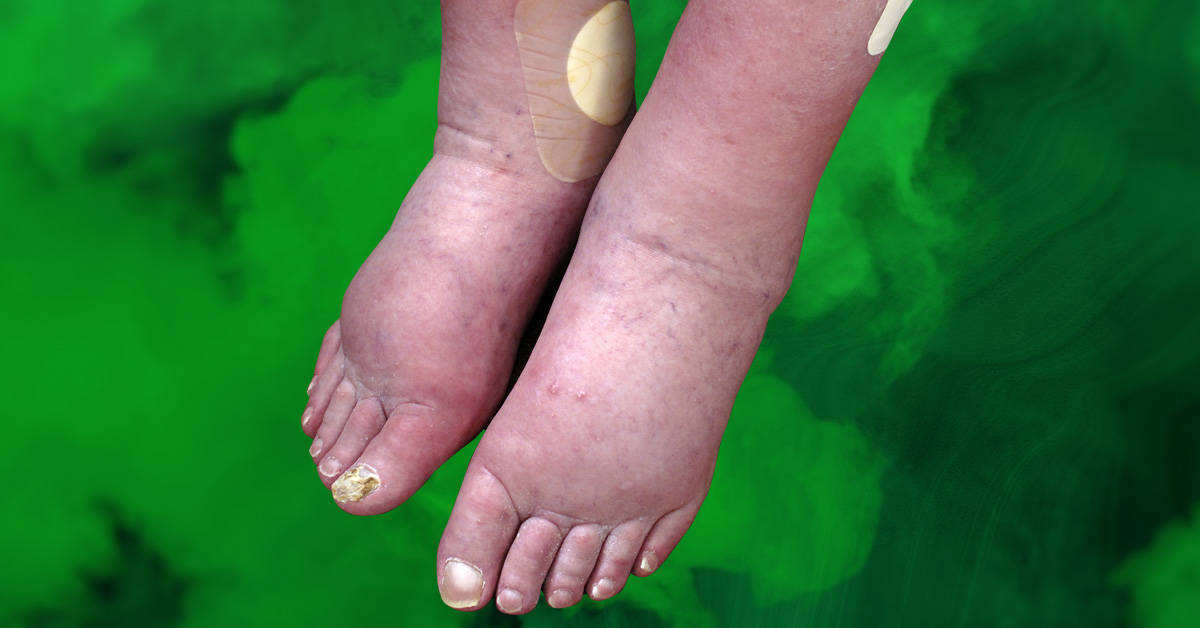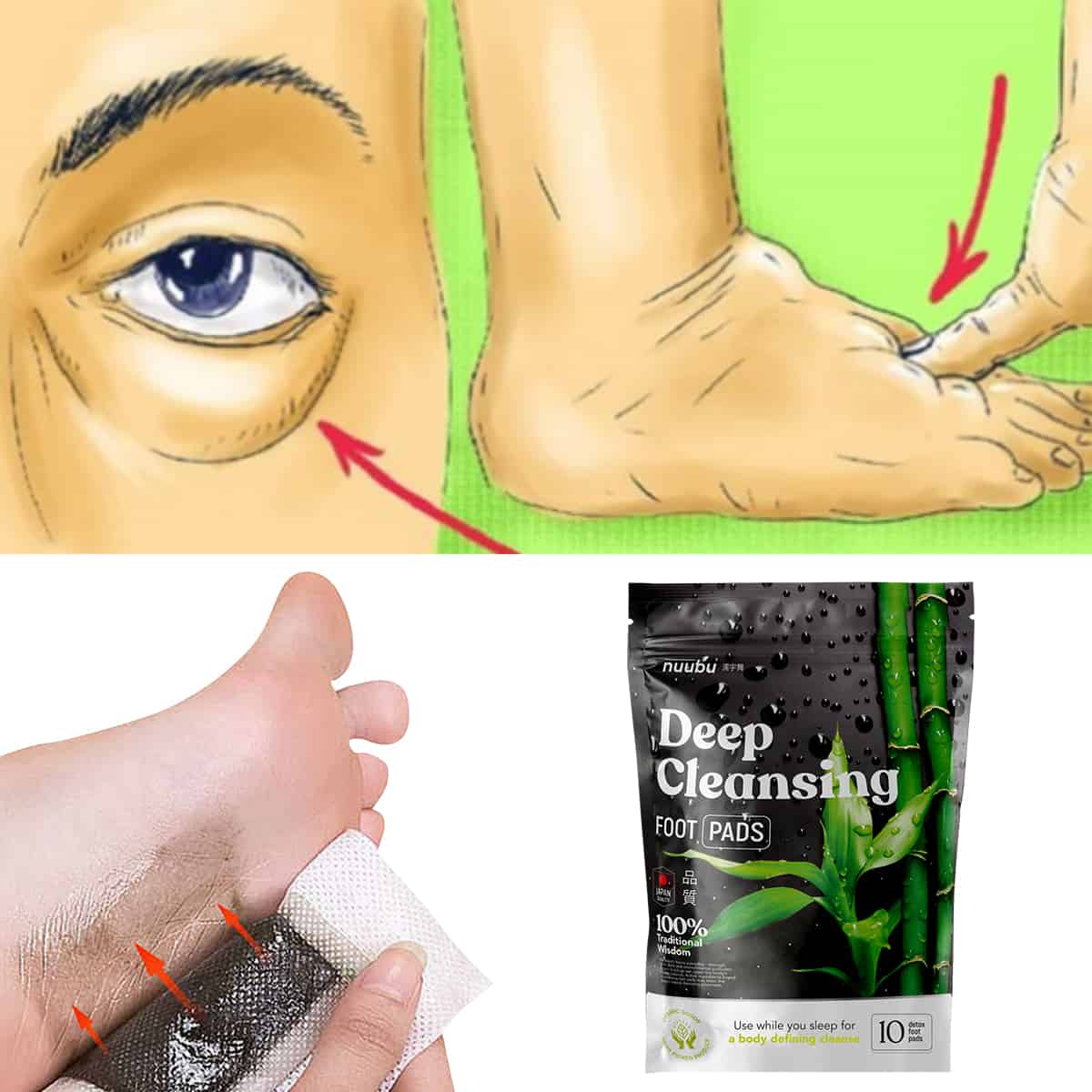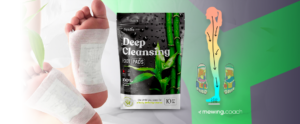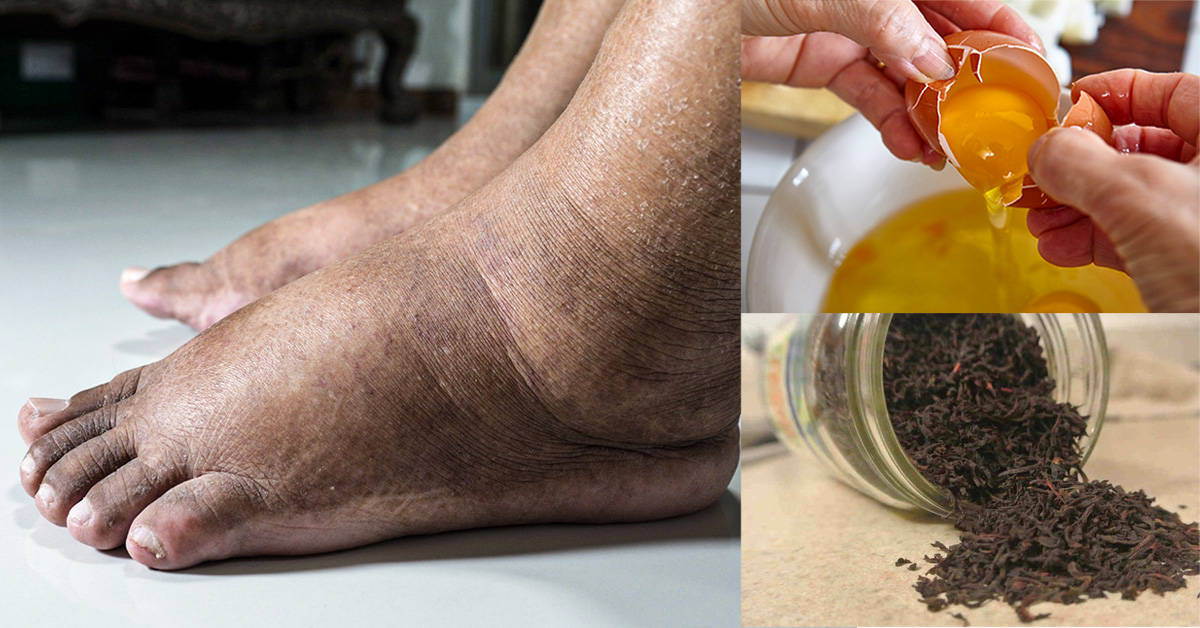Swollen ankles, a condition medically termed edema, can be a frequent source of concern for older adults. A study conducted in the U.S. using data from the Health and Retirement Survey, reveals that persistent swelling in the feet or ankles affects a significant portion of the elderly population, with prevalence rates reaching up to 20% in individuals over 65.
This discomfort can not only be physically bothersome but also impact mobility and overall well-being. If you or a loved one is experiencing swollen ankles, understanding the potential causes and available management strategies is crucial.
Causes Of Swelling Feet For Seniors
While anyone can experience swollen ankles, it’s a more frequent concern for older adults due to various age-related factors. Here are some common culprits behind ankle swelling in seniors:
- Weakened Veins: As we age, our veins lose elasticity and become less efficient at returning blood to the heart. This can lead to fluid accumulation in the legs and ankles, causing edema.
- Chronic Health Conditions: Certain medical conditions, like arthritis or heart disease, can contribute to ankle swelling. In the case of arthritis, inflammation in the joints can lead to fluid buildup around the affected area. Venous insufficiency, a condition where blood struggles to flow back to the heart from the legs, can also cause significant swelling.
- Inactivity: Reduced mobility and prolonged sitting can worsen existing edema by hindering circulation and fluid drainage from the legs.
- Medication Side Effects: Certain medications, such as some blood pressure medications and hormone replacement therapy, can list ankle swelling as a potential side effect.
It’s important to note that this list is not exhaustive, and other factors can contribute to ankle swelling in seniors, including injuries. If you’re concerned about living with persistent swelling, especially if it’s accompanied by pain, redness, or other concerning symptoms, consult a healthcare professional for proper diagnosis and personalized treatment.

Read our detailed blog on the expected timeline of swelling to learn how long sprained ankle stay swollen.
1. Cardiovascular Issues
Swollen ankles in older adults often trace back to heart problems like heart failure and hypertension. This swelling isn’t just discomfort—it could hint at more serious heart issues. When the heart struggles, fluid builds up in the legs, causing swelling.
Seeing a doctor is key for proper diagnosis and treatment. Simple steps like wearing compression stockings, doing leg exercises, cutting back on salt, and managing weight can ease the discomfort.
2. Renal Complications
Kidney diseases can trigger fluid imbalance and edema, especially in the legs. Chronic kidney disease (CKD) sufferers with edema might experience weakened knee strength and balance. Fluid buildup can harm kidney function, potentially leading to acute kidney injury.
Doctors often prescribe diuretics to manage blood pressure and reduce fluid retention in CKD patients. Seeking medical attention is important to address swelling accurately. Simple steps like wearing compression stockings, doing leg exercises, limiting salt intake, and managing weight can also help alleviate symptoms.
3. Venous Insufficiency
Swollen ankles may result from venous insufficiency in the elderly, including varicose veins and deep vein thrombosis (DVT). Varicose veins, enlarged and bulging, can trigger swelling, as can DVT, a clot in a leg vein. ankle swelling due to chronic venous insufficiency (CVI) is common in elderly people.
Consulting a doctor for swelling due to venous insufficiency is crucial for proper treatment. Simple steps like wearing compression stockings, doing leg exercises, limiting salt intake, and managing weight can help. Seek medical attention promptly, especially if swelling occurs suddenly or severely, or if accompanied by other symptoms like leg pain or breathing difficulties.
4. Arthritis
Arthritis is a common culprit behind ankle swelling in older adults. Here’s a closer look at two prevalent types:
- Osteoarthritis: This degenerative form primarily affects the cartilage in joints, leading to inflammation and swelling in surrounding tissues, including the ankles.
- Rheumatoid arthritis: This autoimmune disease causes inflammation throughout the body, often affecting the ankles and other joints. Unlike osteoarthritis, which typically targets weight-bearing joints, rheumatoid arthritis can impact any joint.
Consulting a healthcare professional for proper diagnosis and management of arthritis is crucial to prevent further complications and improve mobility and overall well-being.
5. Joint Disorders
Some joint disorders can contribute to ankle swelling in seniors. Gout is a painful condition that arises from the accumulation of uric acid crystals in joints, often affecting the big toe but also potentially impacting the ankles. It causes sudden and severe inflammation, redness, and swelling.
Bursitis is another type of Inflammation of the fluid-filled sacs cushioning bones, tendons, and muscles near joints can cause localized swelling, pain, and tenderness around the ankle joint.
6. Side Effects
Certain medications commonly prescribed to seniors can list ankle swelling as a potential side effect. These include:
- Nonsteroidal anti-inflammatory drugs (NSAIDs): While effective in managing pain and inflammation, NSAIDs can sometimes lead to fluid retention and ankle swelling, especially with long-term use.
- Diuretics: These medications help remove excess fluid from the body but can paradoxically cause ankle swelling in some individuals due to electrolyte imbalances.
- Blood pressure medications: Some types of blood pressure medications, particularly calcium channel blockers, can contribute to fluid retention and ankle swelling.
If you experience ankle swelling after starting a new medication, consult your doctor to discuss potential adjustments or alternative medications. They can help you weigh the risks and benefits of your current treatment plan and ensure you receive optimal home care while minimizing side effects.
7. Dietary Habits
High sodium intake triggers ankle swelling. Consuming excessive amounts of salt can lead to fluid retention and worsen existing edema. Seniors are particularly susceptible as their kidneys may become less efficient at eliminating excess sodium.
While it might seem counterintuitive, dehydration can also paradoxically cause swelling as the body attempts to hold onto any available fluids. This can be especially concerning for older adults who may be less aware of their thirst cues or have difficulty accessing fluids.
Maintaining a balanced diet that is low in sodium and includes plenty of fruits, vegetables, and water is crucial for regulating fluid balance and avoid swollen ankles due to dehydration and high sodium intake in seniors. It is also advised for elderly people to increase magnesium intake to support muscle function and cardiovascular health.
8. Physical Activity
As we age, keeping our ankles from swelling up becomes tougher. But staying active is key to managing it. It’s common for most seniors to sit around too much, which results in fluid build-up in the legs, making the swelling worse.
Even if the elderly can’t do much, just a bit of walking or stretching helps get things moving and stops the swelling from getting out of hand. It’s not always easy, but every little bit of movement counts in keeping the ankles feeling better.
9. Peripheral Neuropathy
Nerve damage, or peripheral neuropathy, is a common issue among the elderly and can contribute to leg swelling in the extremities. Diabetic neuropathy, in particular, poses significant risks for leg edema due to its impact on nerve function and circulation.
With impaired nerve signals, fluid regulation becomes compromised, leading to fluid buildup and swelling in the legs. Managing conditions like diabetes and seeking appropriate medical care are crucial steps in preventing and addressing swelling associated with peripheral neuropathy.
10. Infections
Infections can trigger inflammatory responses, leading to localized swelling in elderly individuals. Chronic inflammation, often linked to underlying health conditions, can exacerbate persistent edema. When the body’s immune system reacts to infections, it can result in swelling in specific areas.
Additionally, ongoing inflammation can disrupt normal fluid balance, causing edema to linger. Managing infections promptly and addressing chronic inflammatory conditions are essential in alleviating swelling and promoting overall health in older adults.
11. Decreased Elasticity
As we age, our skin and tissues naturally lose elasticity. This can contribute to ankle swelling in seniors in several ways. The tissues supporting veins, blood vessels, and lymphatic vessels become less effective at holding back fluid, allowing it to accumulate in the legs and ankles.
The lymphatic system plays a crucial role in removing excess fluid from tissues. Reduced elasticity can hinder this process, leading to fluid buildup and swelling. Also, as we age, thinner skin becomes more permeable, allowing fluid to leak out of vessels and contribute to ankle puffiness.
How To Recognize Swollen Ankle Symptoms In Elderly?
Recognizing swollen ankle symptoms in elderly individuals is crucial for early intervention. Common signs include visible swelling, pain, and difficulty walking. However, it’s essential to note that some seniors may be experiencing tightness in the ankles without swelling. This sensation can still indicate fluid retention and should prompt further evaluation by a healthcare professional.
Let’s explore the key symptoms to watch for in elderly individuals.
Step 1: Visual Examination
Visual Changes
Compare both ankles for any puffiness or asymmetry, particularly around the ankles and lower legs. While some slight ankle thickening can occur naturally with age, significant or sudden swelling is concerning. Signs of abnormal swelling include asymmetry, pitting edema, or a noticeable increase in size. Consult a healthcare professional if unsure about any visual changes.
Skin Changes
Discoloration or tightness in the skin can indicate underlying issues. Watch for changes like redness, blueness, or shiny skin. Also, be sure to check for differences in skin temperature between both ankles. These signs could signal poor circulation or other concerns and should prompt further evaluation by a healthcare provider.
Step 2: Physical Sensations
Discomfort and Pain
Be alert to signs of discomfort or pain linked to swelling. Notice if the discomfort is localized to the ankles or more widespread. Differentiate between localized pain, which may indicate injury or inflammation, and generalized discomfort, which could signal fluid retention or circulation issues. Seek medical advice if experiencing persistent or severe discomfort.
Changes in Mobility
Watch for alterations in gait or difficulty walking, as these could indicate ankle swelling. Notice if daily activities become challenging due to potential swelling, such as difficulty climbing stairs or standing for extended periods. Any changes in mobility should be promptly addressed with a healthcare professional to determine the underlying cause and appropriate treatment.
Step 3: Functional Assessment
Range of Motion
Seniors should regularly assess their ankle’s range of motion. Pay attention to any limitations in movement, such as stiffness or difficulty flexing the ankle. Recognizing these limitations early can help identify potential symptoms of swelling or other issues. Consult a healthcare professional if experiencing persistent or worsening difficulties with ankle mobility.
Balance Issues
Swelling can disrupt balance by altering the body’s center of gravity and affecting proprioception. To assess balance and coordination in the elderly, observe for signs like unsteadiness while walking or difficulty maintaining balance on one leg. Additionally, perform simple balance exercises like standing on one leg or walking heel-to-toe to evaluate stability and coordination.
How To Reduce Swollen Ankles In Elderly?
Reducing swollen ankles in the elderly is vital for improving comfort and mobility. Simple lifestyle changes can help alleviate swelling, especially in individuals with swollen feet and high blood pressure. Strategies like elevating the legs, staying active, managing salt intake, and wearing compression stockings can effectively reduce fluid retention and promote better circulation, leading to reduced swelling in the ankles.
Detoxification Benefits
Detoxification aids in reducing swelling in ankles by eliminating toxins that contribute to fluid retention and inflammation. Detox foot pads can be a supplementary health care solution for reducing toxins in the body. These pads are designed to draw out toxins through the feet, a method believed to aid in overall detoxification.

Read our one-day detox guide to learn how can you detoxify body in 24 hours using foot detox pads and complement other detox efforts to promote a sense of well-being.
When applying foot detox pads, it’s essential to follow proper guidelines for optimal results. Generally, these pads are applied to clean, dry feet before bedtime and left on overnight. Depending on the product, usage frequency may vary, but most recommend regular application for several consecutive nights.
Nuubu detox pads are highly recommended as a part of foot care. They provide several other health benefits and can make perfect gifts when you are visiting your elderly parents. For a comprehensive review of Nuubu foot detox patches and their effectiveness, read our in-depth guide.

Change Your Diet
A low-sodium diet can help reduce fluid retention and swelling in ankles by balancing the ratio of sodium and water in the body. Drinking enough water can also help flush out excess sodium and toxins, and prevent dehydration.
A recommended low-sodium diet limits the intake of salt and processed foods and favors fresh fruits, vegetables, grains, lean meats, and low-fat dairy products. This diet can help lower blood pressure, prevent fluid retention, and reduce the risk of cardiovascular and kidney diseases which cause swollen ankles.

Be More Physically Active
To promote circulation without straining joints, elderly individuals can engage in gentle exercises like walking, swimming, or chair yoga as part of their feet care routine at home. Regular movement helps prevent stagnation and swollen ankles by stimulating blood flow and lymphatic drainage.
Incorporating these activities into daily routines can improve overall mobility and comfort for older adults.
Elevating the Legs
Encouraging older adults to elevate their legs is essential for promoting fluid drainage and reducing ankle swelling. When resting, simply prop the legs up above heart level to let gravity assist in moving fluid away from the ankles.
It’s important to find a balance between rest and gentle activity to keep ankles healthy. Regularly taking time to elevate the legs can make a big difference in overall comfort and mobility.
Compression Socks
Compression stockings or wraps are effective tools for reducing swelling in older adults and ease conditions like phlebitis by applying gentle pressure to the legs, promoting better circulation, and reducing fluid buildup.
To maximize effectiveness, it’s crucial to ensure proper usage and fit of the compression stockings. Consult a healthcare professional to determine the correct size and compression level for your needs, ensuring optimal benefits from these compression techniques.
Do Regular Self-Checks
It’s important for seniors to keep an eye on their ankles, checking regularly for any signs of swelling. If swelling persists or gets worse, don’t hesitate to take action – it could be a sign of something more serious.
And while you’re at it, consider trying out some home remedies for relieving foot pain, like a soothing foot massage or a warm soak. Your feet will thank you for this care!
Consult with Healthcare Professionals about the Leg Swelling
It’s important to know when to seek help from healthcare professionals. If you notice persistent swelling, severe pain, or sudden changes in your ankles, don’t hesitate to reach out to your doctor. Keeping the lines of communication open with your healthcare providers ensures you get the right care for lower extremity edema at the right time, helping you stay healthy and active for longer.
Frequently Asked Questions
1. Why swollen ankles in elderly woman are more common?
Swollen ankles are more common in elderly women due to a combination of factors including weakened veins, age-related conditions like arthritis, and reduced mobility, all of which can contribute to fluid accumulation in the legs and ankles.
2. How can family members support elderly individuals with swollen ankles?
Family members can play a role in elderly care by encouraging them to do gentle exercise, elevate their legs, and eat a healthy diet low in sodium, while also assisting with tasks like Epsom salt baths (or essential oil massage), wearing compression socks, and choosing comfortable shoes.
3. Is edema a normal part of aging, or does it indicate an underlying problem?
Mild edema can be a common occurrence with age, managed with a few lifestyle changes and exercises at home. However, persistent or severe edema may indicate an underlying health issue and should be evaluated by a healthcare professional to determine the cause and appropriate treatment.



